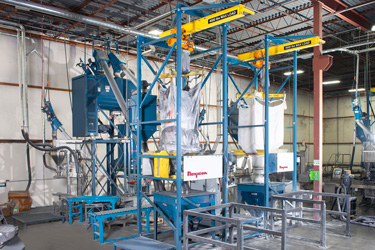 Click to enlarge
Click to enlargeGraphite and talc powders are transferred from twin cantilevered bulk bag dischargers through two flexible screw conveyors to the blender mounted on load cells, at rear. The batch discharges into an 80 cu ft (2265 l) surge hopper from which two smaller flexible screw conveyors supply two packaging lines.
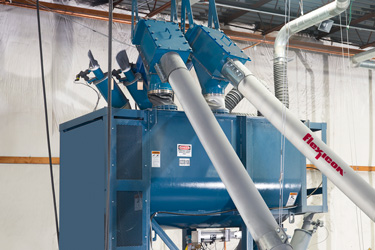 Click to enlarge
Click to enlargeFrom two bulk bag dischargers, two large diameter flexible screw conveyors transport talc and graphite to the blender while the 80 cu ft (2265 l) surge hopper feeds the blended batch into two smaller flexible screw conveyors supplying two packaging lines.
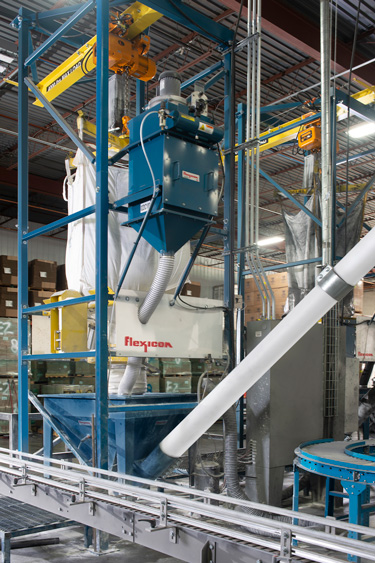 Click to enlarge
Click to enlargeEach bulk bag discharger is equipped with a BAG-VAC® dust collector that contains dust within the sealed system and collapses empty bags prior to tie-off.
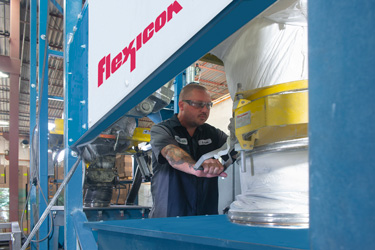 Click to enlarge
Click to enlargeAs the bag empties and elongates, the TELE-TUBE® telescoping tube exerts continuous downward tension on the SPOUT-LOCK® clamp ring and bag spout, promoting flow and evacuation.
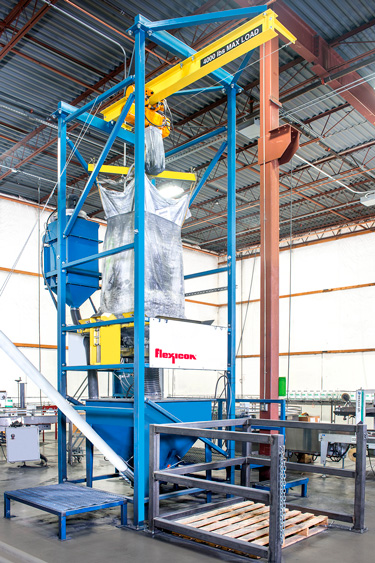 Click to enlarge
Click to enlargeThis bulk bag discharger and flexible screw conveyor feed a graphite packaging line that fills 1 and 5 lb (0.45 and 2.25 kg) containers.
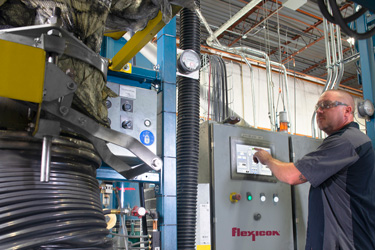 Click to enlarge
Click to enlargeThe gain-in-weight control system enables operators to specify graphite-talc ratios and batch weights.
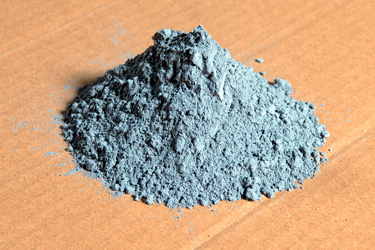 Click to enlarge
Click to enlargeVan Sickle's EZ-Slide® talc/graphite seed-flow lubricant.


 Click to enlarge
Click to enlarge Click to enlarge
Click to enlarge Click to enlarge
Click to enlarge Click to enlarge
Click to enlarge Click to enlarge
Click to enlarge Click to enlarge
Click to enlarge Click to enlarge
Click to enlarge